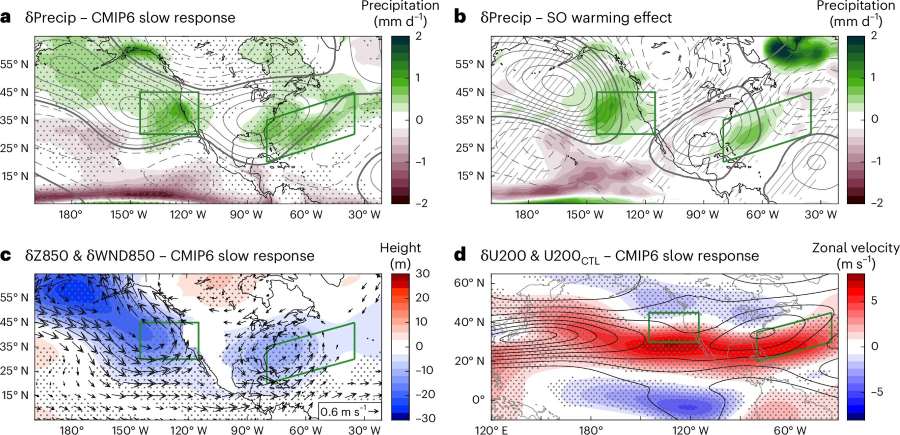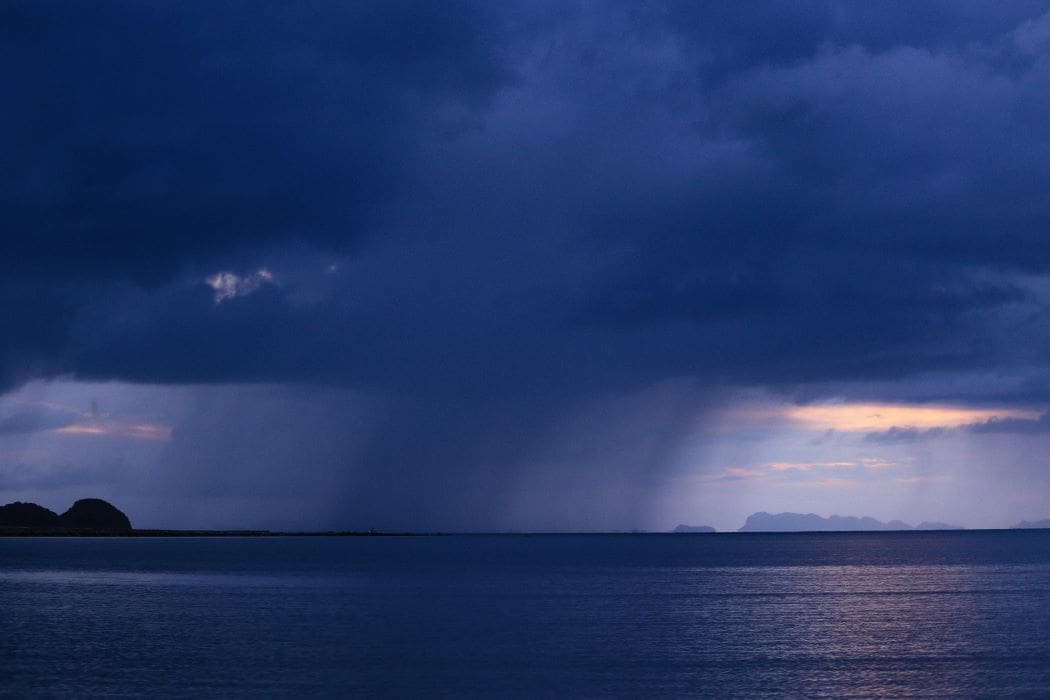Summary:
As global temperatures rise, the Southern Ocean will gradually release heat it has absorbed over decades, influencing weather patterns worldwide.
A study published in Nature Geoscience finds that this delayed ocean warming will contribute to increased precipitation in East Asia during summers and in the western U.S. during winters, regardless of climate mitigation efforts. The research, led by Cornell University, highlights how warming in the Southern Ocean triggers an El Niño-like pattern in the tropical Pacific, setting off atmospheric teleconnections that alter rainfall patterns in the Northern Hemisphere.
While previous climate models have projected similar outcomes, significant uncertainties remained. The study identifies low-altitude cloud feedbacks in the Southern Hemisphere as a key factor behind these uncertainties. Researchers suggest that improving climate models to account for these cloud processes could enhance predictions of both global temperatures and regional precipitation trends.
Given the slow heat release from the Southern Ocean, these wetter conditions could persist for up to 150 years, underscoring the long-term influence of past greenhouse gas emissions on future climate patterns.

Southern Ocean warming will mean a wetter West Coast
As global temperatures warm, the Southern Ocean – between Antarctica and other continents – will eventually release heat absorbed from the atmosphere, leading to projected long-term increases in precipitation over East Asia and the Western U.S., regardless of climate mitigation efforts.
These teleconnections between the tropical Pacific and far-flung areas are reported in a Cornell University-led computer-model study published in Nature Geoscience.
While other computer models have projected similar precipitation increases generated by a warming Southern Ocean, major uncertainties and a wide range of predictions exist between models.
The new study serves to reduce those uncertainties, which could improve predictions of global mean temperatures and regional precipitation.
“We needed to find the cause of those uncertainties,” said Hanjun Kim, the study’s co-corresponding author and a postdoctoral associate working with co-authors Flavio Lehner and Angeline Pendergrass, both assistant professors of atmospheric sciences at Cornell. Sarah Kang, professor in the Max Planck Institute for Meteorology in Hamburg, Germany, is the paper’s other corresponding author.
“I found that low-altitude cloud feedbacks over the Southern Hemisphere can be one cause of those uncertainties in remote Northern Hemisphere regional precipitation,” Kim said. “If we try to reduce the uncertainty of Southern Hemisphere cloud feedbacks, then we can also improve the prediction of global mean temperatures.”
The Southern Ocean has a higher capacity for absorbing heat than other bodies of water due to a strong upwelling of deep cold water, but eventually the water will warm and gradually release heat. When this happens, that heat is distributed, creating teleconnections, which are predicted to increase precipitation in East Asia during summers and in the Western U.S. during winters. Such teleconnections are very similar to how El Niño affects weather patterns.
The model predicted that due to the ocean’s slow release of heat, the new precipitation patterns could persist for up to 150 years, regardless of efforts to reduce greenhouse gases.
“We can occasionally see these processes today, which allows us to study them,” Lehner said, “but we expect in the future for these processes to switch from being an occasional occurrence to being a more permanent state of the system.”
Kim found that low-lying clouds over the Southern Ocean act as a key regulator affecting sea-surface temperatures. Accounting for these cloud feedbacks in climate models help explain the uncertainties and variations from one model to another, according to the study.
There are few observational facilities in Antarctica to provide data on cloud feedbacks in the Southern Ocean, so increasing those would in turn improve predictions, Kim said.
***
The study was funded by the National Oceanic and Atmospheric Administration, and by the Ministry of Science and ICT (Information and Communication Technology), South Korea.
Journal Reference:
Kim, H., Kang, S.M., Pendergrass, A.G. et al., ‘Higher precipitation in East Asia and western United States expected with future Southern Ocean warming’, Nature Geoscience (2025). DOI: 10.1038/s41561-025-01669-5
Article Source:
Press Release/Material by Krishna Ramanujan | Cornell University
Featured image credit: Alexey Demidov | Unsplash




